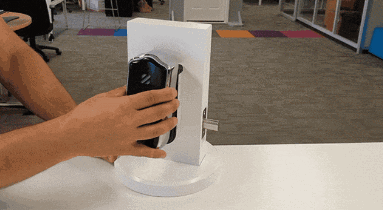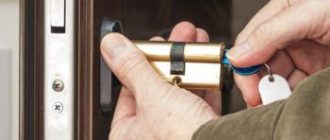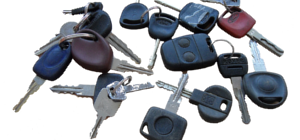
3 Main Practices of Lock Tampering
Tampering with locks is an unfortunate reality that many property owners face. Lock tampering refers to the act of intentionally manipulating or damaging locks for unauthorized access. This poses a significant threat to the security and safety of your property. It is essential to understand the main practices of lock tampering to take the necessary precautions and protect your valuable assets.
One of the main practices of lock tampering is picking. Picking involves using special tools to manipulate the lock’s pins and tumblers, allowing unauthorized individuals to open the lock without a key. This technique requires skill and knowledge, making it a common method used by experienced burglars. By understanding the vulnerabilities of traditional locks to picking, you can invest in more secure locking systems to deter potential intruders.
Another prevalent practice of lock tampering is bumping. Bumping is a technique that involves using a specially crafted key, often referred to as a bump key or a 999 key, to bypass the lock’s pins. When a bump key is inserted into the lock and struck with a blunt object, the transferred energy causes the pins to briefly separate, allowing the lock to be easily turned open. This method requires minimal skill and can be performed quickly, making it a popular choice among criminals.
Finally, drilling is another common practice of lock tampering. Drilling involves using a drill to create a hole in the lock cylinder, rendering it ineffective. Once the lock is drilled, burglars can manipulate the internal mechanism of the lock or insert a new key to gain access. Drilling is a destructive method and often leaves visible damage to the lock. However, it is still utilized by criminals who are willing to sacrifice subtlety for speed.
In conclusion, understanding the main practices of lock tampering is crucial for protecting your property. By familiarizing yourself with techniques such as picking, bumping, and drilling, you can make informed decisions when selecting locks for your home or business. Investing in high-quality locks with advanced security features can significantly reduce the risk of lock tampering and provide you with peace of mind.
Lock Tampering: What is It?
Lock tampering is the act of intentionally interfering with or manipulating a lock in order to gain unauthorized access to a property. It involves exploiting the vulnerabilities or weaknesses in a lock’s design or installation to bypass its security measures. Lock tampering is a common practice among burglars and intruders who aim to breach the security of a property without leaving any visible signs of forced entry.
Why Should You Be Concerned?
Lock tampering is a serious security issue that can put your property and belongings at risk. There are three main practices that criminals use to tamper with locks, and understanding these practices can help you take preventative measures to protect your property.
- Picking: Criminals can use specialized tools to manipulate the lock mechanism and gain access to your property without a key. This practice requires skill and knowledge, but it is a common method used by experienced burglars.
- Bumping: Lock bumping involves using a specially cut key and bumping it into the lock to force it open. This technique is often used by thieves as it can be quick and relatively quiet, making it difficult to detect.
- Drilling: In cases where picking or bumping fails, criminals may resort to drilling the lock. This method involves drilling into the lock cylinder to destroy or disable the internal components, allowing them to open the lock.
By understanding these main practices of lock tampering, you can better evaluate the security of your locks and take appropriate measures to enhance their protection. Investing in high-security locks, installing surveillance cameras, and reinforcing doors and windows can all help deter criminals and prevent unauthorized access to your property.
Practice 1: Pick-Resistant Locks
One of the most common practices of lock tampering is attempting to pick the lock. This involves using special tools to manipulate the lock pins and align them in order to unlock the mechanism. To prevent this type of tampering, pick-resistant locks are designed with additional security features.
There are three main types of pick-resistant locks:
- Pins and drivers: These locks have specially-shaped pins and drivers that make it difficult for lock pick tools to manipulate them. The unique shapes of these components require a specific picking technique that most illegal pickers do not possess.
- Sidebar: A sidebar is an additional mechanism within the lock that needs to be properly aligned in order to unlock it. This added layer of security makes it harder for lock pickers as they would need to successfully manipulate both the pins and the sidebar.
- Magnetic technology: Some pick-resistant locks utilize magnetic technology in their locking mechanisms. These locks use magnets to hold the pins in place and require a special magnetic tool to manipulate them. This makes it extremely difficult for traditional lock picks to bypass the lock.
Pick-resistant locks are recommended for high-security areas such as commercial properties, government buildings, and residential homes with valuable assets. These locks provide an additional layer of protection against lock tampering and help safeguard your property.
Practice 2: Secure Key Management
One of the main practices to protect your property from lock tampering is to ensure secure key management. Properly managing your keys can significantly reduce the risk of unauthorized access to your locks. Here are some key steps to follow:
- Key Control: Implement a system for controlling and tracking your keys. This can include maintaining a log of all key holders, providing each key holder with a unique key, and regularly auditing your key inventory to ensure all keys are accounted for.
- Restricted Access: Limit access to keys to only authorized individuals. This can be achieved by storing keys in a secure location, such as a locked cabinet or safe, and ensuring only authorized personnel have access to the key storage area.
- Key Duplication: Control key duplication by requiring proper authorization and documentation for any key copies made. Implement a key control policy that outlines the process for requesting and approving key duplication.
- Key Replacement: In the event of lost or stolen keys, promptly replace the affected locks and keys to prevent unauthorized access. Keep records of key replacements to ensure all keys are properly accounted for.
- Employee Training: Provide comprehensive training to your employees on the importance of secure key management. This should include educating them on the risks of unauthorized access, the proper procedures for key control, and the consequences of failing to adhere to key management policies.
By implementing these secure key management practices, you can enhance the security of your locks and reduce the risk of lock tampering.
Practice 3: Reinforce Doorframes
When it comes to protecting your property from tampering, reinforcing doorframes is one of the main practices you should consider. Strong doorframes are essential for ensuring the security of your doors and preventing potential break-ins.
There are several ways to reinforce doorframes effectively. Firstly, you can install strike plates made of reinforced metal. These plates provide increased durability and resistance against forced entry. Additionally, using longer screws to fasten the strike plates and hinges can further reinforce the doorframe.
Another method to strengthen doorframes is by installing door frame reinforcements. These reinforcements, also known as door jammers, are placed at the base of the door and prevent it from being kicked in. They are made of sturdy materials, such as steel, and are adjustable to fit different door sizes.
It is crucial to assess the condition of your doorframes regularly and ensure that there are no weaknesses or vulnerabilities. Any signs of damage, cracks, or gaps should be repaired promptly to maintain the security of your property.
By implementing these practices and reinforcing your doorframes, you can significantly enhance the overall security of your property and deter potential intruders.
Signs of Lock Tampering
Lock tampering is a serious concern for the security of your property. Criminals can use various methods to tamper with locks in order to gain unauthorized access. By being aware of the signs of lock tampering, you can take proactive measures to secure your property and prevent potential break-ins.
Here are three main practices that indicate lock tampering:
- Forced Entry: One of the most obvious signs of lock tampering is evidence of forced entry. This can include visible damage to the lock mechanism, such as scratches, dents, or bent parts. Additionally, if the lock cylinder is loose or misaligned, it could indicate that someone tried to manipulate or force open the lock.
- Keyway Damage: Lock tampering can also be detected through keyway damage. If you notice any signs of drilling, picking, or scratching around the keyhole, it suggests an attempt to bypass the lock’s mechanism. Additionally, if the lock shows signs of excessive wear or if the key no longer fits smoothly into the keyway, it may indicate tampering.
- Unusual Resetting: Another sign of lock tampering is the lock being unusually reset. For example, if you find your lock suddenly rekeyed without your knowledge or if the combination lock’s numbers have been changed, it could signal tampering. Additionally, if you notice any tampering with electronic locks, such as the display showing unusual patterns or actions, it’s a red flag.
It’s important to regularly inspect your locks for these signs of tampering. If you suspect any tampering or unauthorized access, it’s crucial to take immediate action by contacting a professional locksmith or security expert. By being proactive and vigilant, you can ensure the safety and security of your property.
Deterrence Methods
There are three main practices that can be used to deter lock tampering and protect your property:
1. Lock Upgrading: One effective method of deterrence is to upgrade your locks to more secure options. High-security locks have advanced features such as pick-resistant cylinders, reinforced strike plates, and anti-drill components. Upgrading your locks can make it much more difficult for criminals to tamper with them.
2. Security Cameras: Installing security cameras is another effective deterrence method. Visible cameras act as a deterrent to potential criminals, as they know they are being watched and recorded. In addition to deterring tampering attempts, security cameras can also provide valuable evidence in the event of an incident.
3. Lighting: Proper lighting can also deter lock tampering. Well-lit areas make it more difficult for criminals to work unnoticed and can make them less likely to attempt to tamper with locks. Motion-sensor lights near entrances and areas with locks can be particularly effective, as they startle potential criminals and draw attention to their actions.
By implementing these deterrence methods, you can reduce the risk of lock tampering and protect your property from unauthorized access.
Benefits of Preventing Lock Tampering
Preventing lock tampering can provide several benefits for the security of your property.

1. Enhanced Security: By taking steps to prevent lock tampering, you can significantly enhance the security of your property. Lock tampering is one of the main ways unauthorized individuals gain access to a property. By ensuring that your locks are tamper-proof, you can greatly reduce the risk of break-ins and protect your belongings from theft.
2. Peace of Mind: Knowing that your locks are secure can provide peace of mind. You can rest assured that your property is protected and that you have taken necessary precautions to prevent unauthorized entry. This peace of mind is invaluable, especially if you have valuable assets or sensitive information stored in your property.
3. Cost Savings: Preventing lock tampering can also help you save money in the long run. Avoiding break-ins and theft can save you from the financial losses associated with stolen property or damage to your property. Additionally, by investing in tamper-proof locks upfront, you can reduce the need for costly repairs or replacements in the future.
In conclusion, preventing lock tampering offers enhanced security, peace of mind, and cost savings for property owners. By implementing measures to prevent tampering, you can protect your property and the belongings within it effectively.
Case Studies of Lock Tampering
In this section, we will explore three real-life case studies that highlight the different practices of lock tampering.
- Practice 1: Lock Picking
- Practice 2: Bumping
- Practice 3: Key Impressioning
One case involved a skilled lock picker who was able to open high-security locks using specialized tools. The perpetrator gained unauthorized access to multiple properties, causing significant financial loss to the owners.
In another case, an individual used the bumping technique to quickly open various locks. By inserting a specially crafted key and applying force, the tumblers inside the lock were manipulated, allowing easy entry. This method was exploited to break into numerous homes and businesses undetected.
Lastly, a locksmith discovered a key impressioning scam. A criminal would gather information about the target property and then create a working key by filing down a blank one based on the impressions left by the original key. This allowed the thief to gain access without arousing suspicion or leaving any signs of forced entry.
These case studies highlight the ingenuity and resourcefulness of lock tamperers. It is essential for property owners to be aware of these practices and take necessary precautions to protect their belongings.
Locksmith Solutions
Locksmiths provide essential services for protecting properties and ensuring the security of locks. With their expertise, they can offer solutions to address the 3 main practices of lock tampering.
1. Lock Repair and Maintenance:
Locksmiths can inspect locks for any signs of tampering or damage and provide necessary repairs. They can also perform routine maintenance to ensure locks are in optimal working condition, reducing the risk of tampering.
2. Lock Upgrades:
Locksmiths can recommend and install advanced locks that are designed to withstand tampering attempts. These locks may include features such as reinforced cylinders, anti-drill plates, and pick-resistant mechanisms, providing enhanced security for your property.
3. Security System Integration:
Locksmiths can integrate locks with advanced security systems, such as alarms and surveillance systems. This integration allows for better monitoring and detection of any tampering attempts, providing an additional layer of security for your property.
By availing the services of a professional locksmith, you can ensure that your locks are secure and protected from tampering. Whether you need lock repairs, upgrades, or security system integration, locksmiths offer comprehensive solutions to safeguard your property.
Security Systems Integration
When it comes to protecting your property from tampering, security systems integration plays a crucial role. By combining different security measures, you can create a comprehensive and robust defense against any attempts of intrusion. Here are the three main practices of security systems integration:
- Surveillance Cameras: Placing surveillance cameras strategically is an effective way to monitor your property. Integrating these cameras with an alarm system can provide real-time notifications and recordings in case of any tampering attempts.
- Access Control Systems: Implementing access control systems helps you regulate who can enter certain areas of your property. By integrating these systems with your security network, you can quickly identify any unauthorized attempts and respond accordingly.
- Intrusion Detection Systems: Integrating intrusion detection systems involves installing sensors on doors, windows, and other entry points. These sensors can detect any unauthorized entry attempts and trigger alarms or alerts to deter intruders.
By integrating these security systems, you create a multi-layered defense mechanism that strengthens the overall security of your property. It allows you to have a proactive approach towards tampering attempts and ensures prompt action is taken in case of any security breaches.
Training for Property Owners
One of the main ways to protect your property from tampering is to educate yourself and receive proper training. By understanding the common techniques used by intruders to tamper with locks, you can take steps to prevent it from happening.
Here are 3 key practices to focus on during your training:
- Lock Maintenance: Regularly inspect and maintain your locks to ensure they are in proper working condition. Lubricate them as needed to prevent them from freezing or becoming stiff. This will make it more difficult for intruders to tamper with the locks.
- Awareness: Stay informed about the latest lock tampering techniques so that you can recognize any signs of attempted tampering. By being aware of potential threats, you can take immediate action to secure your property.
- Additional Security Measures: Implement additional security measures such as adding deadbolts or installing security cameras. These measures can deter potential intruders and make it harder for them to tamper with your locks.
By investing time and effort into training yourself on lock tampering, you can greatly reduce the risk of someone gaining unauthorized access to your property. Remember, prevention is the key to protecting your assets and maintaining peace of mind.
Q&A:
What are the main practices of lock tampering?
The main practices of lock tampering include lock picking, lock bumping, and lock drilling.
How can I protect my property from lock tampering?
To protect your property from lock tampering, you can use high-security locks, install a security system, or reinforce your doors and windows.
What is lock picking?
Lock picking is a technique used to manipulate the components of a lock to unlock it without using a key.
What is lock bumping?
Lock bumping is a method where a specially crafted key, or a bump key, is used to forcefully unlock a lock.
Why is lock drilling a common method of lock tampering?
Lock drilling is a common method of lock tampering because it involves drilling through the lock cylinder to bypass it completely.
What is lock tampering?
Lock tampering is the act of intentionally manipulating or compromising a lock in order to gain unauthorized access to a property or item.






